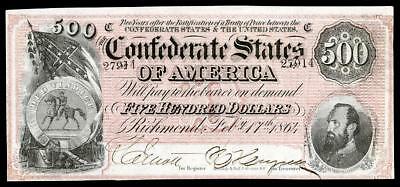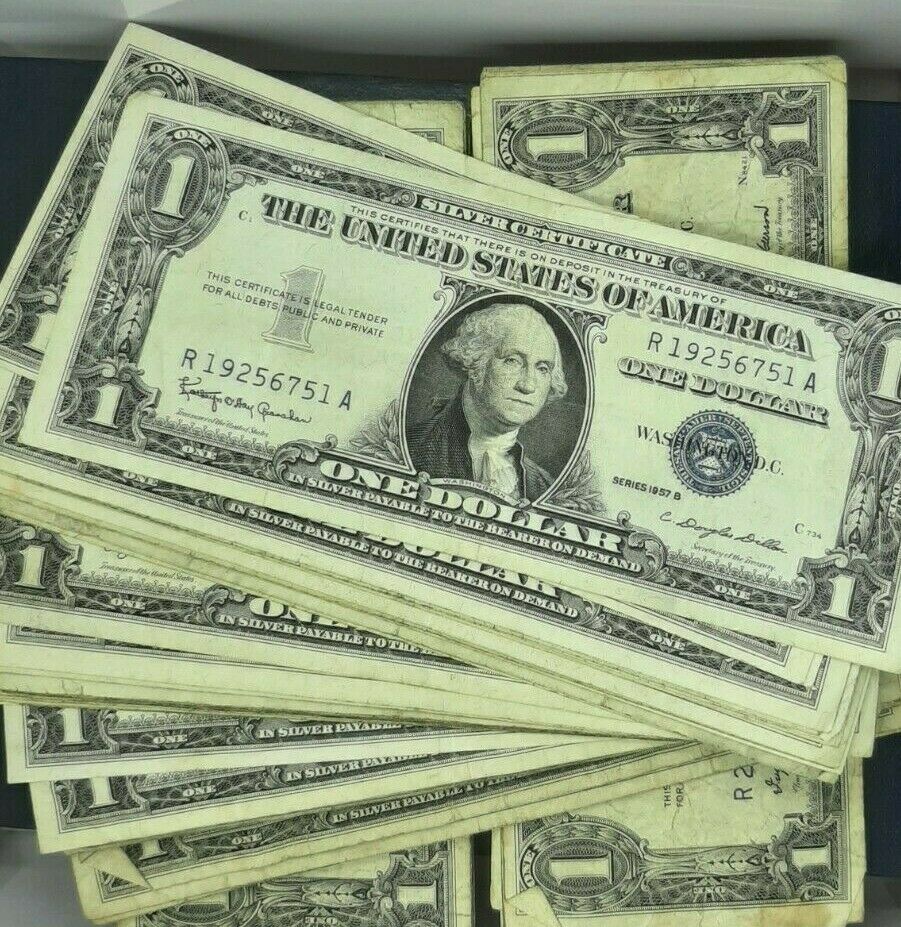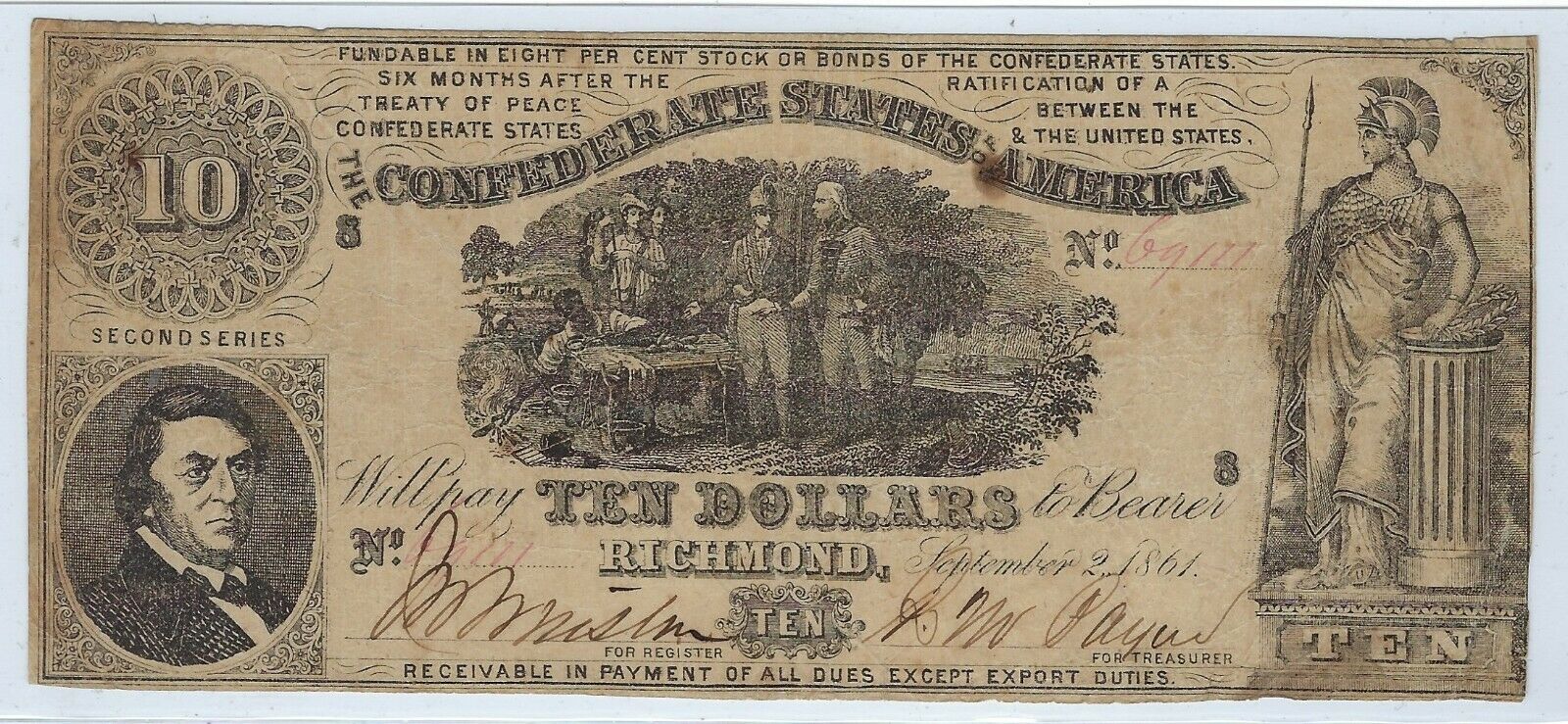-40%
T-23 PF-2 Confederate Paper Money 1861 - PMG Very Fine 25 - PLUS nice color!
$ 1900.8
- Description
- Size Guide
Description
T-23 PF-2 .00 CSA Currency.John E Ward at left. Wagon load of cotton in the center. “The Corn Gatherer” at right. Issued from November 15, 1861 through December 30, 1861.
Serial number 3332. Plen A1.
PMG Very Fine 25!
Nice orange underprint; mostly framed. Comes with a silver PLUS sticker indicating a superior PMG 25 note.
Genuine.
This note is Leggett, Keatinge & Ball’s high quality note, printed in late 1861. This type has an interesting history. It was developed from a bill of the Mechanics Savings Bank of Savannah, Ga. The center of the note features a wagon loaded with cotton in the center. “The Corn Gatherer” is shown at right. The man at the left is the most obscure man on Confederate paper money by far, and for 50 years was thought to be Williamson S. Oldham, a Confederate States Senator from Texas. However, the identity of this individual was finally solved and published in a 1917 Numismatist article. He is John Elliot Ward, a President of the Mechanics Bank, a holder of several government offices, and a person opposed to secession. He left the South and went to New York City to practice law. An ironic figure to be placed on a Confederate note to be sure, but the plate was already engraved and of quite good quality. Receivable in payment for all dues except export dues and fundable in Confederate States stock bearing 8% interest six months after the ratification of a treaty of peace between the Confederate States and the United States.
This type comes on high quality bank note paper of two types – plain and red fiber paper. It was printed using two plates of two notes – T-23 A and T-32 A plate letters; and T-23 A1 and T-32 Aa plate letters.
The highest grade I can locate is AU++ for this type. It is difficult to find in conservative VF and better, most offered are VG to Fine. The orange underprint is faded on many examples due to circulation as well as to the elements. Further, the underprint was subject to oxidation, which appears as a darkening of the color. Bright orange, full “X X TEN” underprint examples are worth a significant premium.
A note about 3rd party grading. PCGS and PMG do a good job putting a floor on quality within a grade range and have become proficient in detecting repairs (though occasionally they miss something, or see something that is not there, as we all can).
Notes housed in Net or Apparent holders have a wide range of quality from very nice (in rare cases may be nearly choice) to dogs with major problems, so each needs to be evaluated on their own.
However, PMG and PCGS focus on technical grading due to circulation and damage and do not have a mechanism for evaluating condition or eye appeal - whether a note is average, better than average, choice or gem for the grade based on its color, trim and margins. The exception to this are slabbed notes of New or Uncirculated grades to some degree. This is important as Very Fine, Extremely Fine or AU notes can have a wide range of values depending on these factors not reflected in the slab grade. A fully framed Confederate or obsolete note is worth considerably to a lot more than one that is trimmed into the margin for the same grade. Likewise, color is important. These factors can affect the value of a note by 50%, 2-1 or even 3-1, e.g., an AU 58 (PPQ or not) T-20 1861 CSA note trimmed into the margin is worth between 0 and 0. The same grade, AU 58 (PPQ or not), with a full frame and good color/inking is worth something like 0 to 00 depending on eye appeal. I will continue to use the terms plus for above average, choice and gem to mean varying degrees of superiority of condition and eye appeal of a note within a grade as documented in my book which is based on what collectors seek out and pay premiums for.
In coins, we’ve seen the third party graders add things like full bell lines, full head, full bands which reflected the market. I’d expect either the grading services or another party to do the same for paper money. If you are just buying the number on the holder for the best price, you may well be buying low end notes for the grade!
Pierre Fricke. Immediate Past President of the Society of Paper Money Collectors; Professional Numismatists Guild (PNG); Professional Currency Dealers Association (PCDA); ANA, EAC, etc...
BuyVintageMoney.
Author of the standard guide book to Confederate money - Collecting Confederate Money Field Edition 2014.
Free shipping and insurance.
eBay has announced that it will start to collect sales tax on behalf of sellers for items shipped to customers in Alabama (Jul 1), Connecticut (Apr 1), Iowa (Feb 1), Minnesota (Jan 1), New Jersey (May 1), Oklahoma (Jul 1), Pennsylvania (Jul 1), and Washington (Jan 1). Additional states are being added like Idaho and more than 20 others. This is the new internet tax out of the US Supreme Court Wayfair decision. Buyers are responsible for paying this sales tax.
See eBay information for list of states eBay charges this tax payable by buyers to eBay as part of eBay invoices -- https://www.ebay.com/help/selling/fees-credits-invoices/taxes-import-charges?id=4121#section4










